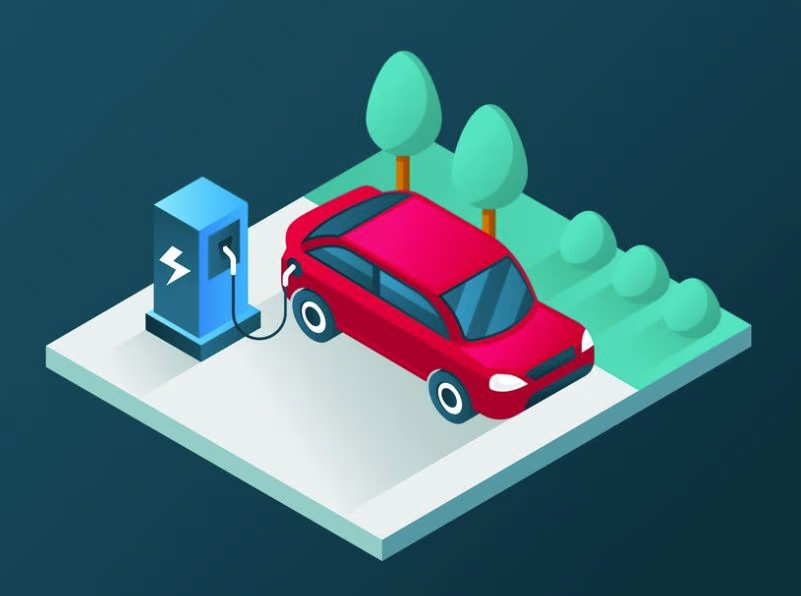EV Charging Stations: Will the infrastructure improve anytime soon?
Why is the Charging Infrastructure so important?
Whenever car manufacturers decide to start a new EV project (about 4-5 years before production, see our article on product lifecycles), one recurring concern always comes up: how will the charging infrastructure impact sales? Unfortunately, a significant issue that manufacturers can't fully control is the availability and reliability of EV charging stations. While the cars and technology continue to impress, potential buyers are often worried about the current state of the electric vehicle charging infrastructure. Charging station availability remains a major roadblock, slowing down the transition to electric vehicles. As we look ahead to 2024, it’s clear that the future of EV charging depends on addressing these problems with smart EV charging technology, increased investment, and innovations like vehicle-to-grid technology. So, what’s the current state of EV charging, and more importantly, will it improve? Let’s take a closer look.
Disclaimer: As always, the write-up includes a lot of data and forecasts which we have done. Sources are analyst reports from JP Morgan, UBS, CitiGroup and BoFa Securities. Please reach out to us at [email protected] if you would like to know the exact reports for specific numbers.
The Current State of EV Charging Infrastructure
The EV market is on fire. With personal electric vehicle stock expected to soar to 43 million units in Europe and the US by 2030, it’s clear that the shift to electric is not just a trend—it’s a revolution. But here’s the catch: while EV sales are rocketing, the charging infrastructure is still playing catch-up, trying to meet the growing demand. The good news is, the global number of public fast chargers (>22KW - 149 KW) is expected to reach 250k and HPC (>149KW) around 240K by 2030. It might sound like a lot, but when you’re trying to service millions of EVs, it’s like having one charger for an entire city block. And we haven’t even started talking about the slower chargers, which, though more common, aren’t cutting it for drivers who need to juice up quickly.
Right now, EV charging infrastructure is like a smartphone with a dying battery—always searching for a power source, and not finding enough. Europe, with its ambitious climate goals, is expected to lead the charge in the charging hardware market (pun intended) with about 27,000 fast chargers expected to be sold in the private market by 2030. The US, on the other hand, is expected to sell around 11,000. The global market should reach sizes of $9-11 Billion (for 50KW, 150KW and 350 KW as proxy power levels). The private market trying to complement public chargers to make the complete infrastructure and charging experience more practical.
This shortage is more than just an inconvenience; it’s a real barrier to widespread EV adoption. Range anxiety is still a thing, and knowing that there’s a reliable, fast charger nearby can make or break someone’s decision to go electric.
Why is EV Charging Such a Pain Point?
1. Speed and Availability:
Imagine pulling up to a charging station, plugging in your EV, and then waiting. And waiting. And waiting. While we’ve gotten used to the convenience of refueling a gasoline car in mere minutes, charging an EV can take significantly longer. Fast chargers can reduce this time to under an hour, but they’re still not as widespread as they need to be. This is especially true in rural areas, where finding a fast charger can be like finding a needle in a haystack.
Adding to the frustration is the availability issue. Not all chargers are created equal, and finding a compatible, functioning charger when you need it most can be a stressful experience. The US and Europe are working to expand their networks, but the reality is that we’re still years away from having the kind of comprehensive, reliable infrastructure that drivers need.
2. Regional Disparities:
Now, let’s zoom out a bit and look at the bigger picture. The world isn’t moving towards electrification at the same pace. According to some market analyses done by the Boston Consulting Group, Deloitte Automotive as well as JP Morgan, there are some stark regional differences that are expected to persist through 2030. The US, with its vast reserves of oil and natural gas, might lean more towards LNG (Liquefied Natural Gas) and fuel cell technologies, potentially lagging behind in BEV (Battery Electric Vehicle) adoption. Meanwhile, Europe and China are gearing up to be the frontrunners in the BEV and fuel cell markets.
This divergence means that depending on where you live, the availability and type of charging infrastructure can vary widely. In Europe and China, where governments are heavily investing in green technologies, we can expect to see a denser network of fast chargers. But in the US, the expansion might be slower, especially outside of major urban centers.
3. High Costs and Technical Requirements:
Fast chargers are not only expensive to install but also to maintain. The aforementioned BCG analysis predicted that the global DC charger hardware market could be worth a whopping €8-9 billion by 2030. This figure includes the high costs associated with the latest fast chargers, which can deliver up to 350 kW of power. These chargers are a game-changer for reducing wait times, but they come with a hefty price tag.
Moreover, the technical requirements for these chargers are complex. They need to be compatible with a variety of vehicles—from personal cars to heavy trucks and buses—each with different charging needs. For example, trucks and e-buses are expected to be major players in the electrification game, requiring specialized chargers that can handle their larger batteries. This adds another layer of complexity to an already challenging situation.
4. Consumer Expectations:
Let’s not forget the consumers—us, the drivers who want it all. We want fast charging, affordable prices, seamless software integration, and a top-notch customer experience, all wrapped up in a package that’s easy on the eyes. These expectations vary widely, from must-have specs to optional technical features. Balancing these needs while expanding the charging infrastructure is no small feat. It’s like trying to build a house while the family’s already moving in—everything needs to be done at once, and it all needs to work perfectly.

Will the EV Charging Infrastructure Improve?
1. Increased Investment:
Governments and private companies are pouring money into expanding and upgrading the charging network. Europe is particularly aggressive in this regard, with policies that push for the widespread adoption of DC fast chargers. The EU’s ambitious carbon reduction targets are a significant driver, with incentives for both public and private sectors to install charging stations. In fact, Europe is expected to see a significant growth in its charging infrastructure by 2030, with a focus on urban areas where the demand will be highest.
In the US, the government is also stepping up. The Bipartisan Infrastructure Law, passed in 2021, allocates $7.5 billion to build a national network of 500,000 EV chargers. This investment is aimed at bridging the gap in charging availability, particularly in underserved areas.
2. Technological Advancements:
Technology is our best friend when it comes to improving EV charging. Battery technology is advancing at a rapid pace, and this is key to reducing charging times. As batteries become more efficient and capable of handling higher charges, the time it takes to top up your EV will decrease, making fast chargers even more effective.
Moreover, the rise of smart charging systems and vehicle-to-grid (V2G) technology could revolutionize the way we think about energy consumption. Imagine a world where your car not only charges itself but also helps power your home or office during peak hours. This kind of innovation could dramatically increase the value and convenience of owning an EV.
3. Expansion into New Markets:
The market for fast charging hardware isn’t just limited to personal vehicles. Trucks, buses, and off-highway vehicles are all expected to see increased electrification, which will drive demand for specialized charging solutions. We at EV-Global believe that off-highway vehicles, in particular, will require a diverse group of charging solutions due to their varied applications and environments.
For instance, electrification of trucks is expected to start with smaller vehicles operating in urban areas, where the need for reliable, fast charging will be most acute. This will likely spur further development of urban charging networks, benefiting all types of EVs.
4. Regional Collaborations and Standardization:
To address the regional disparities in charging infrastructure, there is a growing push for international collaboration and standardization. Organizations like the UNECE (United Nations Economic Commission for Europe) are setting standards for automated lane-keeping systems and other technologies that can be adopted globally. Standardizing charging infrastructure across borders will make it easier for EV owners to travel long distances without worrying about finding a compatible charger.
Imagine driving your EV from Berlin to Paris, knowing that you’ll find the same type of fast charger every 100 kilometers, no matter which country you’re in. This level of consistency and reliability is what’s needed to make EVs a truly viable alternative to gasoline-powered vehicles.
The EV-Global Verdict
Most people who know me, know what my answer to this question always is: the fears are overblown. If you actually own an EV, you will quickly reach the conclusion that the charging infrastructure is not that bad, and is indeed improvely drastically every single day. Costs to charge EVs are improving by the day as well. But yes, I definitely agree, there's a lot of room for improvement and in the industry, the EV charging infrastructure may be the biggest pain point today, but the future looks promising. With increased investment, technological advancements, and a growing focus on standardization, we can expect significant improvements in the coming years. By 2030, the landscape of EV charging will likely be very different, with faster, more widespread charging options that meet the needs of a rapidly expanding EV market.
So, will the EV charging infrastructure improve? Absolutely. But like all things in the automotive world, it’s going to take time, investment, and innovation to get there. In the meantime, as we navigate the growing pains of this transition, it’s important to keep our eyes on the road ahead—because the future of mobility is electric, and it’s closer than we think.
The journey to a fully electrified world is just beginning. While the road might be bumpy now with various EV charging problems, the destination promises to be worth every twist and turn. With the right investments in electric vehicle charging infrastructure, smart EV charging technology, and the expansion of fast EV chargers, we can drive forward together toward a cleaner, greener, and more connected future!



